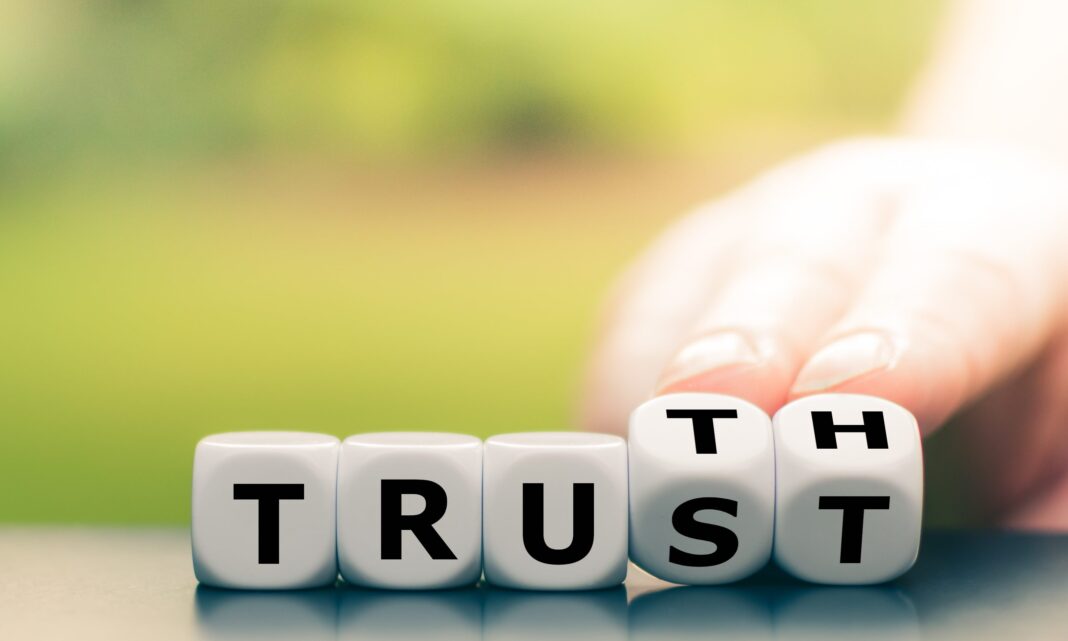With artificial intelligence set to take already-problematic propaganda, misinformation, and censorship to entirely new levels, it is more important than ever that you find sources of information that are trustworthy and reliable.
One of our members recently said that there is nothing more important than establishing a trustworthy platform at which news is accurate, speech is free, and discussion is constructive. I agree.
And I use this space to share my story so that you can better understand why you should trust me and my team at BIG Media, and become part of our growing community of critical thinkers.
When I was in grade school, I turned to my parents’ Encyclopedia Britannica collection regularly to answer questions that came up in class or on the schoolyard. I still recall lessons learned as I did the research for my Grade 6 speech on the mafia.
When I was in university, I took a wide range of courses – psychology, communication, history, political science, and anthropology were my favourites – because I wanted to have at least a basic understanding of the subjects that I deemed most important.
When I became a reporter at the Calgary Mirror, I did in-depth features on all sorts of topics. Crime and biomedical issues were of particular interest to me. It was empowering to be able to, for example, interview two of the world’s foremost genetics experts, and have them explain to me and, therefore, our readers how the search for the fountain of youth was going from their highly informed perspectives.
It was also fascinating to dig well beneath the surface on such topics as the illicit drug trade and gang activity.
In the late 1990s, when I started working evenings as a copy editor for the Calgary Herald newspaper, I was also freelancing for corporations including Suncor, Shell, Chevron, the World Petroleum Congress, and Telus. Writing executive speeches, press releases, newsletters, etc., took a lot of research and exposed me to the perspectives of some very intelligent people on the leading edge of technology.
On numerous occasions, I received permission from corporate clients to convert my work to articles for the Calgary Herald. Some of those story ideas were about revolutionary technology and massive new projects that were important developments on the energy landscape.
However, each time I pitched the business editor of the Herald on one of these articles, his answer was the same: “Not interested.”
In the year 1999, on the heels of writing a speech for a Telus executive about the burgeoning world of ecommerce – a concept that, to the best of my knowledge, had never been covered by the Calgary Herald – I decided to try one last time to convince the editor to run one of my business articles.
“Not interested.”
“Not interested?!” I protested. “But this is a story about the very nature of the way we do business changing dramatically. I think your readers should know about how the Internet is going to change the way we do business.”
“Not interested.”
The Calgary Herald continued its steady diet of mind-numbingly boring business coverage. So many basic real estate stories. So many modified press releases. So many articles on subjects with which the reporters and editors were very familiar. Almost all articles were suitable for anyone having trouble falling asleep, but offered no insights on critical developments related to the Internet.
Calgarians deserved better.
So, I recruited some investors and journalists, and in October of 2000 launched a magazine called Business Edge. I believe that right out of the gate we offered the most intelligent local coverage of emerging technologies.
We grew Business Edge’s distribution from 20,000 in one city to the point at which we now, having recently relaunched as a hybrid magazine/marketing/communications firm, reach 200,000+ businesses with every two issues, including the vast majority of businesses in 18 key markets from coast to coast.
Business Edge was originally scheduled to relaunch on March 31, 2020, but news of a rapidly spreading coronavirus saw me postpone that initiative, as I told investors, “until the dust settles.”
As much of the western world locked down in contending with a pandemic in Spring 2020, I suddenly – for the first time in decades – had a lot of spare time on my hands.
I was following news reports closely, and by March of 2020 it was fairly clear that the virus was not a major threat to healthy people. As a father of seven, I was quite relieved to learn that COVID-19 was not killing or maiming young people in significant numbers (statistically speaking). Most international reports indicated that children and young adults either experienced mild or no symptoms when infected with COVID-19.
However, as I checked in with various friends, I realized that the facts were being swept away amid a tsunami of misinformation and media sensationalism.
One of my friends was literally locking his children in their home, afraid that the kids might die from COVID if they went outside. Discussions with many people following a similar theme convinced me that I needed to do something to help people calm down, and realize that education, physical and mental fitness, and protecting the vulnerable should be the key priorities in fighting through this particular pandemic.
In my first COVID-related post on LinkedIn, in March of 2020, I asked my “media friends” to learn the distinction between “confirmed cases” and COVID infections. Most journalists seemed oblivious to the fact that there were countless COVID infections that were not being tested for or reported, particularly among young persons.
That post garnered a large audience, and I received notice from LinkedIn that the post was trending at #media.
In my next post, as media organizations and medical officials worked to convince people that there was utter chaos in hospitals, I pointed out that out of more than 4 million people in my home (at the time) province of Alberta, there were at that time 44 people reported to be in Alberta hospitals who had tested positive for COVID-19. “Not 44,000, not 4,400 – just 44,” I said.
That post created quite a stir and surprisingly generated commentary from various regions of the world. Some attacked me for “spreading dangerous lies,” while others thanked me for being a rare voice of reason. As is always the case when one challenges me, I responded respectfully to my detractors, even the ones who called me a “killer” or “murderer” who was putting their families’ lives at risk by “spreading misinformation.” As I calmly and logically replied with links to government data, the vitriol dissipated steadily.
I could see that one single post was allowing me to educate tens of thousands of people about a very important matter. The post was going viral, and I was spending most of my day responding to comments and helping people make sense of the numbers. But, suddenly, the post vanished from the feed.
I had heard rumours of big-tech censorship, but this case surprised me because I was simply documenting facts, and the dialogue – after the early barrage of insults – was constructive.
Six days later, I wrote a post matching up the number of COVID hospitalizations with the number of hospitals offering acute care in each Canadian province. In Alberta, the number at the time was 4 hospitals for every person in hospital with COVID-19.
Again, the post was going viral and generating meaningful discussion before getting deleted by LinkedIn.
I submitted a complaint, had it escalated twice, and LinkedIn eventually responded with the explanation that my posts were wrongfully deleted because of a “technical glitch.” Hmm. The posts were restored, but at the bottom of the feed.
It was exciting to help so many people filter through the BS and better understand what was actually going on, but it was frustrating to see fact-backed discussion being censored by content police.
As this trend continued, I was inspired to start a media company that focused on verifiable facts and logic. That way, nobody would be able to delete the truth.
North Americans deserved accurate news coverage, and I knew that I could help provide it.
As I devised a business plan for a media company with the highest levels of accuracy, integrity, and transparency, I had a chance meeting with brilliant scientist Laurie Weston – BIG Media birth – stranger then (non-fiction).
As co-founder of BIG Media Ltd., Laurie has helped me understand that proper treatment of data can be a key differentiator in storytelling. It was a blow to my ego, but I came to understand that even though I am proficient at figuring out roughly the surface area of a pizza, I am not intellectually equipped to write news articles at the level necessary to be truly accurate, and to provide critical context on the most important matters.
So, I fired myself as a news writer, relegating myself to opinion and humour columns only. Meanwhile, I recruited a team of extremely intelligent humans – mostly accomplished scientists – to provide high-level analysis.
I steered away from trained journalists, who are part of a broken system that rewards sensationalism. My key prerequisites for being a contributor to BIG-Media.ca: good with data, good with words, good with logic, and good hearted.
I don’t think you will find another editorial team on the planet with this much brain power and integrity – Our brand of journalism is more accurate, and this is why…
In a little more than two years, BIG Media Ltd. has earned a reputation for being extremely accurate, trustworthy, and transparent in its coverage of the big issues.
In order to ensure lasting editorial objectivity, we do not accept advertising, sponsorship, or government funding. Our only agenda is documenting truth.
Our readers fund the business through modest membership fees. Those members understand that BIG Media Ltd. is a growing community of critical thinkers, and that their input – through constructive feedback and story ideas – is a key piece of the puzzle.
They also know that they can trust us to provide practical knowledge on the big issues.
We are on the right track, and the more subscribers we have, the better the news coverage will be.
Contact me any time with questions about the unique brand of journalism at BIG Media.
(Rob Driscoll – BIG Media Ltd., 2023)


